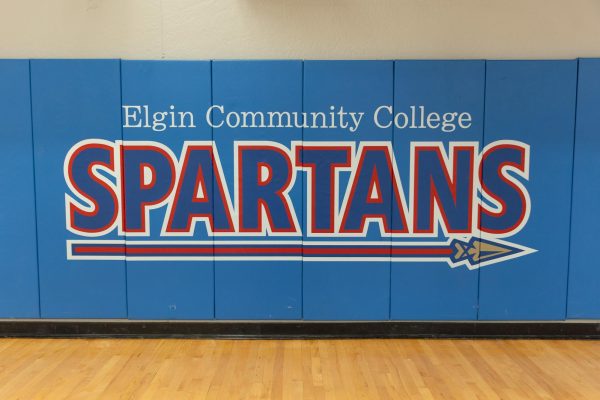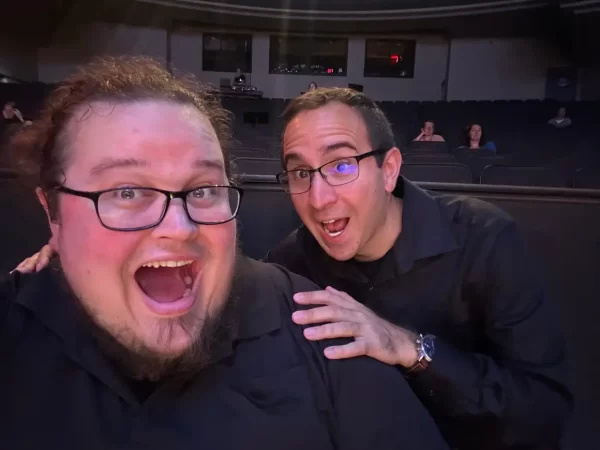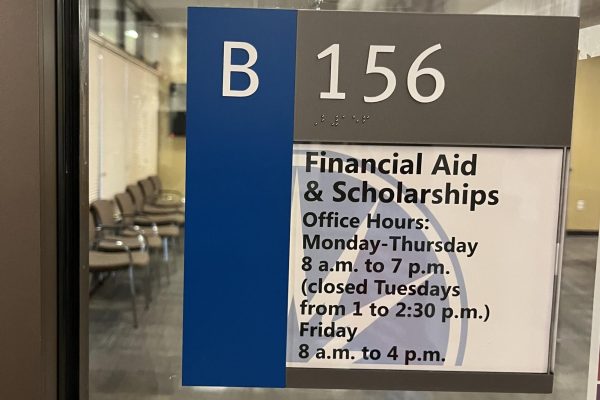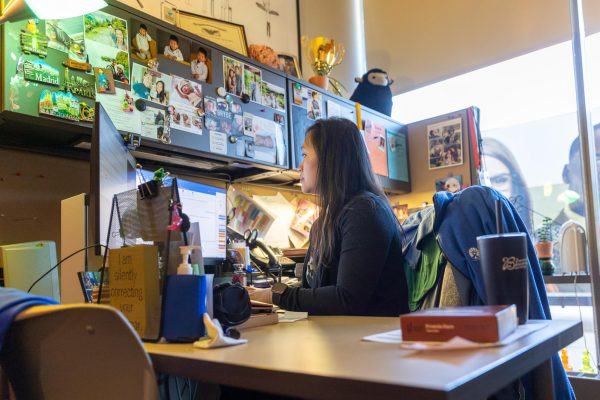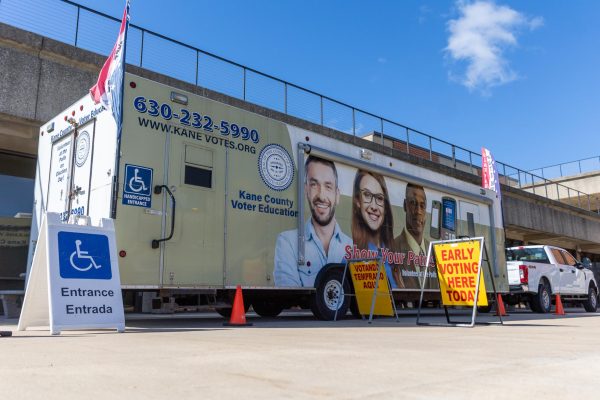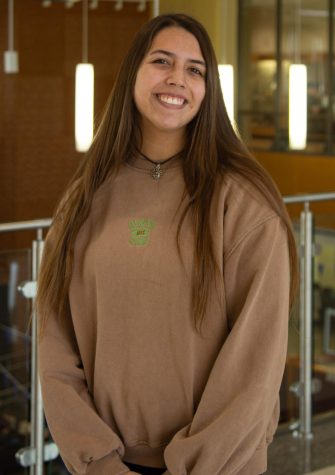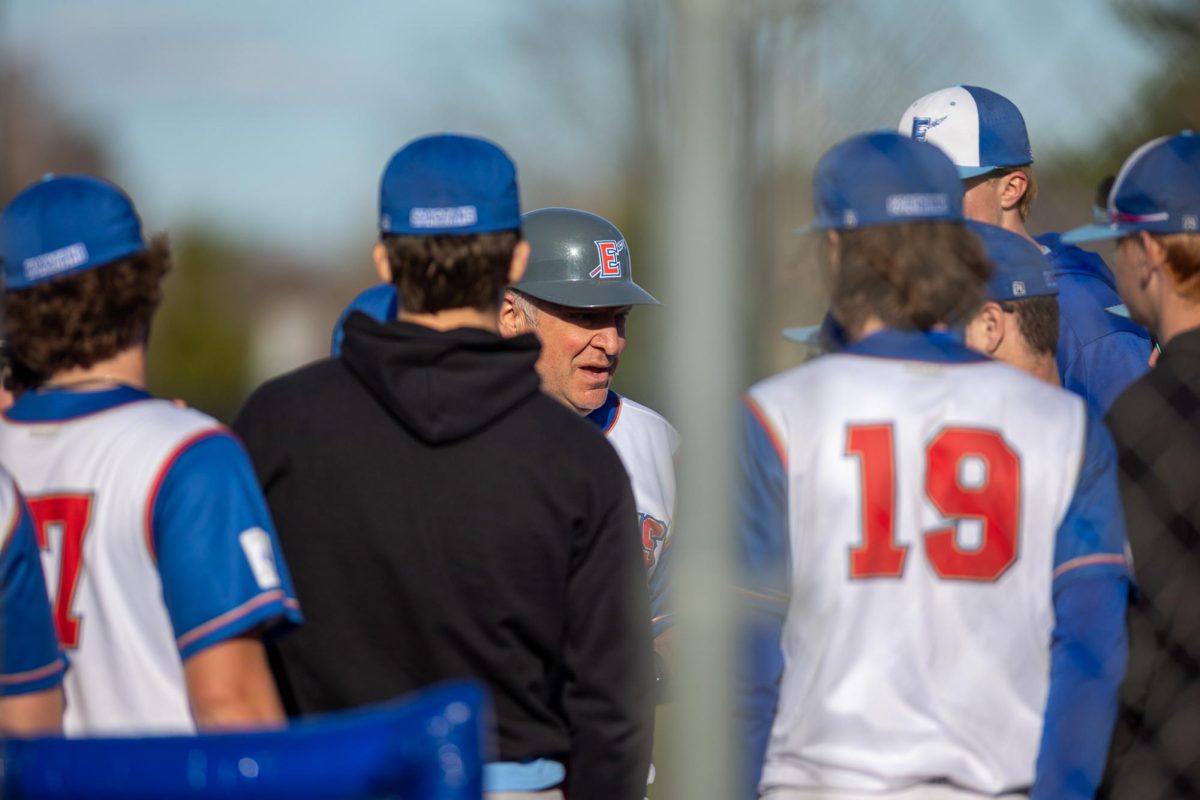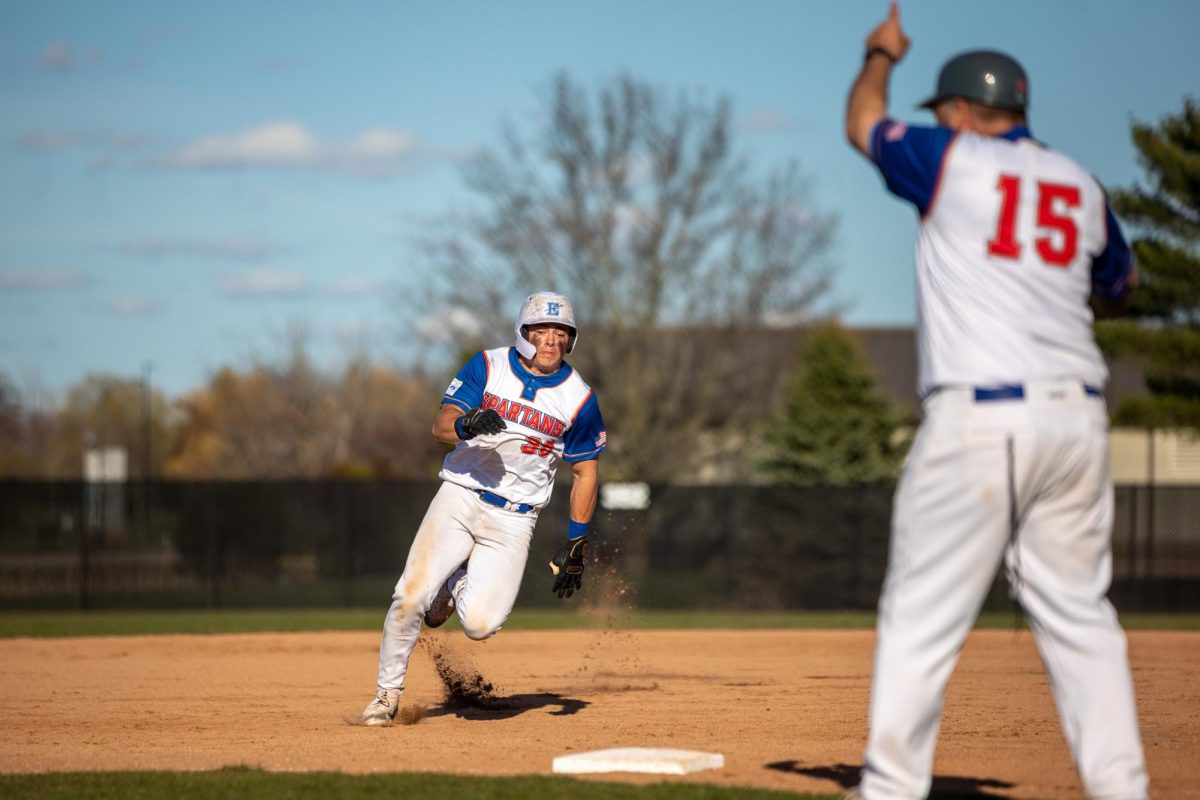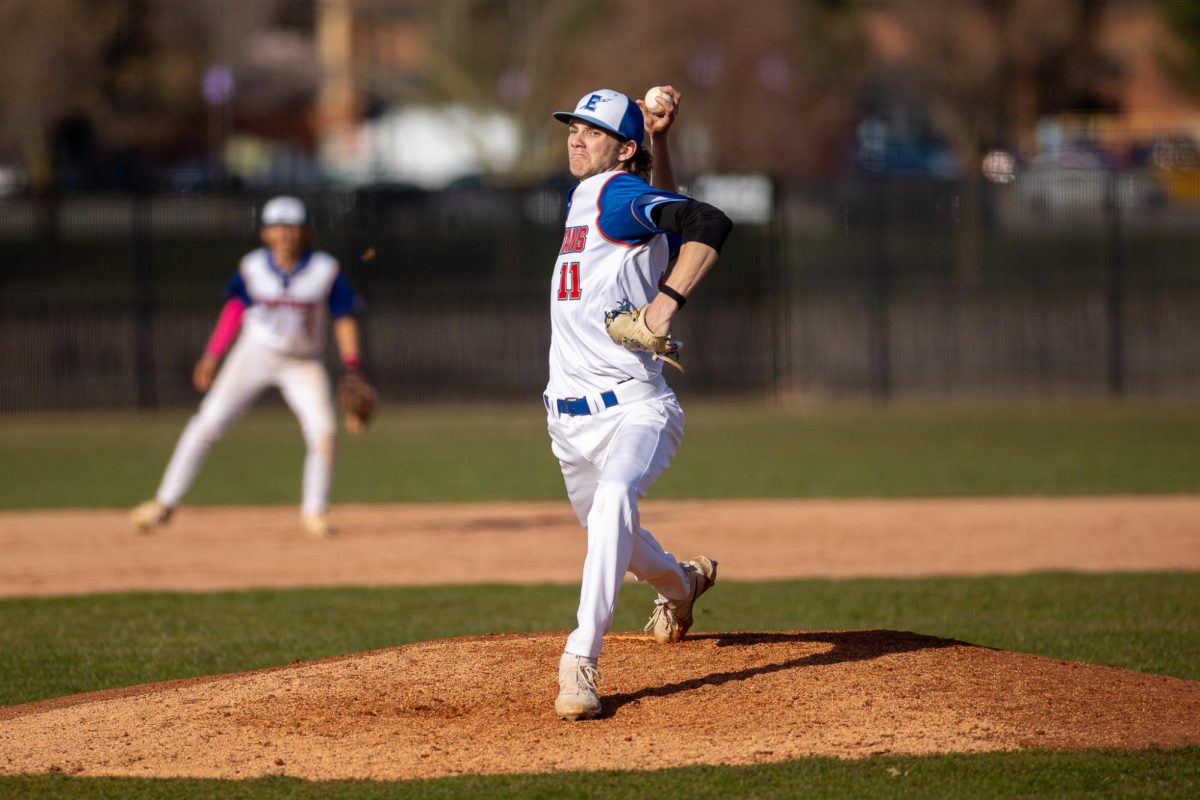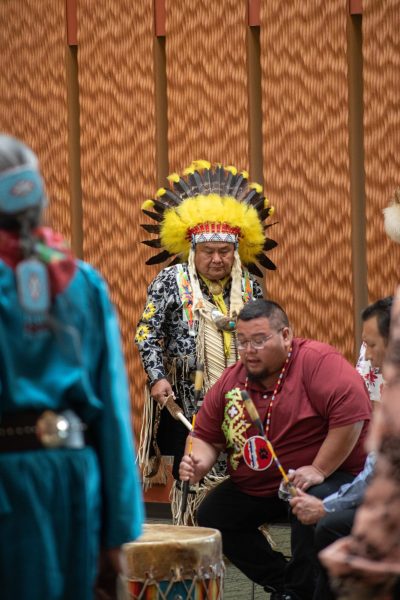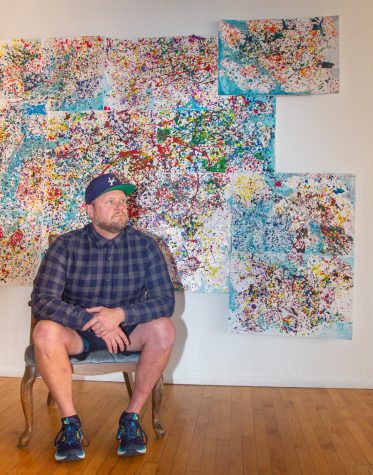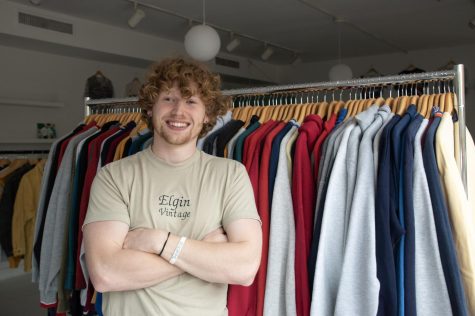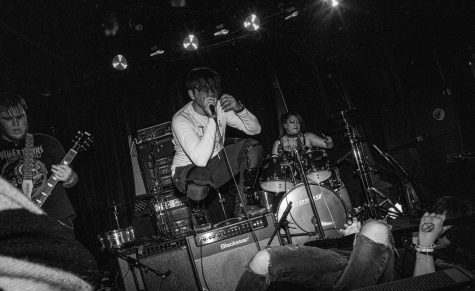“We’re All on the Same Wavelength”: Has the Local Music Scene Saved Concert Etiquette?
Local musicians weigh in on etiquette and offer venue commendations
A concert attendee sits on their phone while a band plays on stage, displaying what many consider poor etiquette.
April 21, 2023
After scrolling through Instagram and seeing a digital flyer for a concert in the area, Conner Braasch quickly gets excited texts from his friends, usually along the lines of “Dude, wanna go to the show with me?” After throwing on a flannel and band tee, Braasch meets his friends outside the venue, the low rumble of chatter and energy slowly rising.
This is a familiar display for Braasch when going to shows at the Darkroom or Core Cottage, both local DIY music venues for the alternative scene. As the community of people for local music and larger concerts grow more popular in younger generations, the knowledge of audience etiquette and ‘rules’ of concert going has evolved.
Talk on social media has rocketed with conversations regarding the decline of audience etiquette, with fans throwing phones at artists on stage, yelling obscenities between sets and even not knowing the lyrics of popular songs past the chorus.
Conner Braasch and Gavin Haywood, frequenters of the local music scene and members of the band “The Foreign Eshays,” offer an alternative perspective on the ideas behind concert etiquette, the differences with larger venues and the community that has formed from the local scene.
“If you haven’t gone to any local shows, just like anything for the first time, it can be intimidating because it’s a bunch of people you don’t know,” Braasch said. “After that though, everyone comes together to watch the music and you understand that everyone is there for the same purpose; it’s because they love music and they like supporting local bands. So then it’s like, we’re all on the same team here so let’s have a good time.”
Haywood loves the vibe of a the local scene.
“There’s all sorts of people you can meet, and they’re nice people,” Hawood said. “People look out for you. It’s a community where when someone falls, you pick them up. It’s an organized and loving chaos. I’m there for it all, I love it so much.”
Etiquette for local shows deviates from large venues as it generally depends on the specific place, band and kind of music playing.
“No karate in the pit,” Haywood said. “Unless you’re at a hardcore show, then it’s different.”
Braasch says that the biggest rule is to simply pick someone up if they need help or get hurt.
“Nobody wants to go to a concert to have fun and then get trampled,” Braasch said. “Just look out for other people.”
Haywood builds upon the contrast of etiquette being a local artist himself, having been in multiple bands over the past couple of years.
“[With local shows] the artists are on the same page as the audience when it comes to audience safety,” Haywood said. “Generally they’ll call out B.S that happens from the crowd, and as an artist you can be to be part of the crowd too. It’s a very humbling experience and it’s like a family.”
Braasch believes there a key difference between big and local concerts.
“The thing I like about DIY shows is that you’re part of a group. If you go to a bigger concert, like I’ve been to Lollapalooza a couple times, it’s a bunch of different people and doesn’t come together as well,” Braasch said. “That’s when you have stuff where people are literally killing each other and trampling people. It’s more about seeing the artist versus going to have a good time and build a community.”
Braasch and Haywood also went into the inner workings of a mosh pit, explaining the etiquette hidden in the supposed violence.
“When you see mosh pit videos on social media or on YouTube, you think ‘Damn, that looks f— brutal!’ especially as someone who doesn’t go to shows, it looks scary,” Braasch said. “But it really is just organized chaos… If someone falls or actually gets hurt, then people make sure you’re okay.” Haywood emphasizes saying “If someone falls then theres usually five people picking them up.”
Contrasting the sometimes violent and negative interactions that happen between fans at larger venues, Braasch said, “There are sometimes bad people but it’s usually a collective process of ‘okay, they’re a sh—y person, we should either kick them out, call them out, say something to them, or just ignore them. Usually it isn’t a big deal.”
Braasch and Haywood give a shoutout to the scene and local music.
“If anyone is new to the scene and want to start going to more shows, these are three venues I’d advise: If you like heavier stuff like punk or metal, I heavily recommend the Darkroom, Braasch said. They have downstairs shows and their outdoor shows are phenomenal. They’re what got me into everything and they’re my favorite venue. If you like indie or music that’s a little bit softer, but still offers a similar atmosphere I’d check out Sidestreet Studios in Elgin. If you like a mix in between I’d check out Core Cottage in Elgin.”
Haywood mentions a venue in Plano called The CowDog, as well as the bands Totally Cashed and The Grow Ops.
Haywood also mentioned recently started up his own DIY music venue in his home in Bartlett, called the Hellhole.
“I don’t really know what I’m doing but I pretend like I know what I’m doing,” Haywood said. ” I’m winging it, but I’m having fun with a lot of people and meeting people. It’s great to see all these bands that I love come together here. It’s euphoric. There’s nothing really like it; going to a show is one thing but running a show another. It’s a realization that wow, I’m really doing this. Don’t be scared of checking out new things, that’s how you enjoy life. Go out and see some local shows.”


